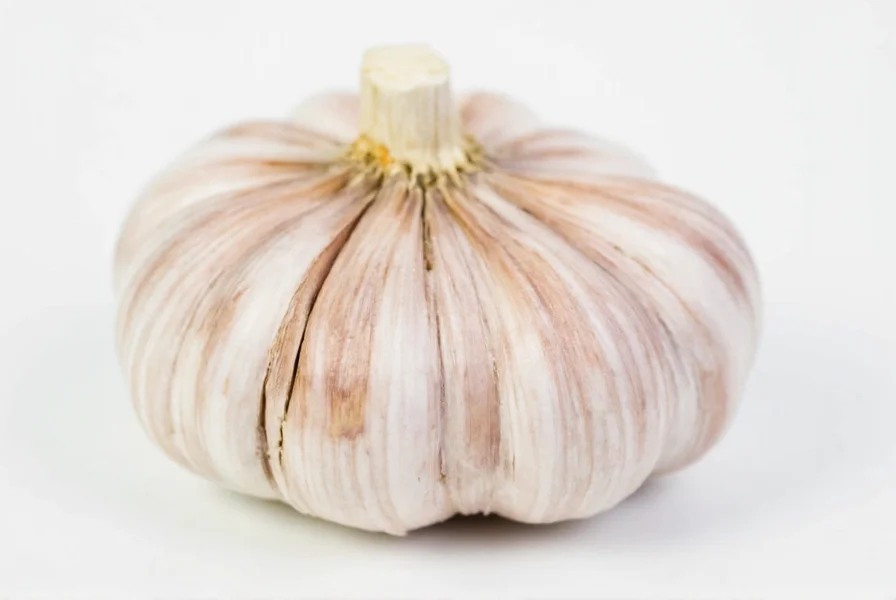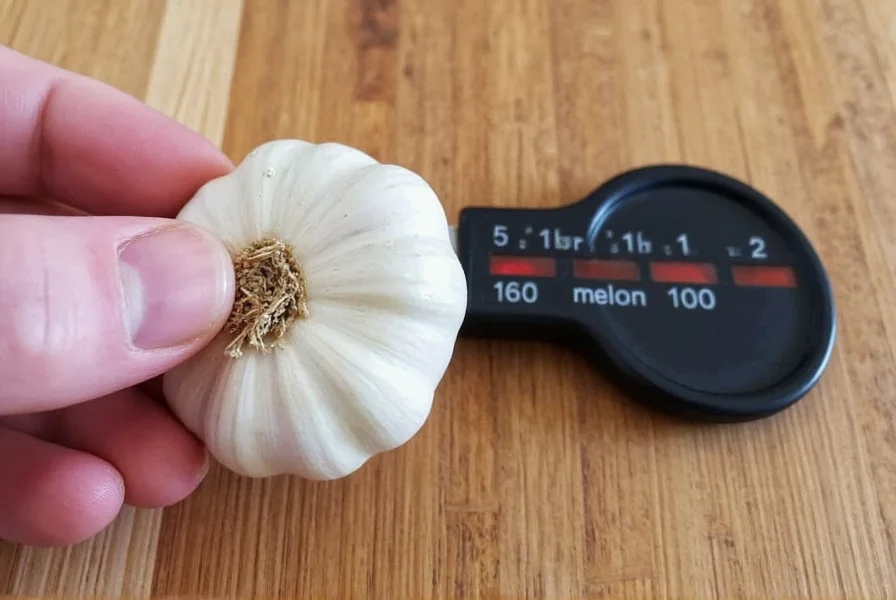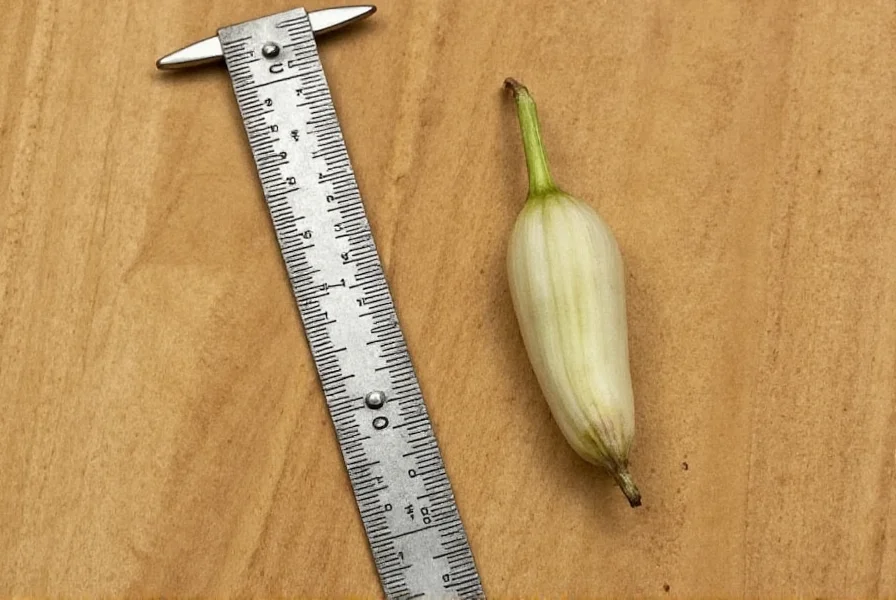Understanding exact garlic measurements transforms your cooking experience. Whether you're following a delicate French sauce recipe or preparing a robust Italian pasta dish, the right garlic quantity makes all the difference between perfection and overpowering bitterness. Many home cooks struggle with inconsistent results simply because they don't know how much is one garlic clove in practical terms.
Garlic Clove Measurement Fundamentals
Garlic measurements aren't one-size-fits-all. The actual amount varies based on clove size, variety, and preparation method. When recipes specify "1 garlic clove," they typically mean a medium-sized clove from a standard supermarket bulb. But what does that translate to in measurable terms?
| Garlic Form | Medium Clove | Large Clove | Extra Large Clove |
|---|---|---|---|
| Whole (peeled) | 3-5g (0.1-0.18oz) | 6-8g (0.2-0.28oz) | 9-10g (0.3-0.35oz) |
| Chopped | 1 teaspoon | 1½ teaspoons | 2 teaspoons |
| Minced | ½ teaspoon | ¾ teaspoon | 1 teaspoon |
| Garlic powder | ⅛ teaspoon | ¼ teaspoon | ½ teaspoon |
| Garlic salt | ¼ teaspoon | ⅓ teaspoon | ½ teaspoon |
Why Precise Garlic Measurements Matter
Garlic's flavor compounds activate when cut or crushed, creating that distinctive aroma and taste. Too little leaves dishes bland; too much creates overpowering bitterness. Professional chefs emphasize that knowing how much minced garlic equals one clove prevents recipe failures. The sulfur compounds responsible for garlic's flavor are potent—even small measurement differences significantly impact final taste.
Consider these real cooking scenarios where precise measurements make the difference:
- When making aioli or garlic butter, excess garlic can make the emulsion unstable
- In delicate seafood dishes, too much garlic overwhelms subtle flavors
- For garlic-infused olive oil, precise ratios prevent bitterness during heating

Factors Affecting Garlic Measurements
Several variables influence how much one garlic clove weighs and its equivalent measurements:
Garlic Variety Differences
Softneck garlic (common in supermarkets) typically has smaller cloves than hardneck varieties. Rocambole types often yield larger individual cloves, while elephant garlic (technically a leek) produces massive cloves that can weigh 20-30 grams each.
Preparation Method Impact
The way you prepare garlic dramatically affects volume:
- Chopped: Larger pieces with more air space = more volume per clove
- Minced: Finer pieces pack tighter = less volume
- Pasted: Using salt to crush garlic creates the most concentrated form
Moisture Content Variations
Freshly harvested garlic contains more moisture than cured bulbs. This affects both weight and how the garlic behaves when cooked. Older garlic may be drier and more concentrated in flavor.
Practical Measurement Techniques
When your recipe calls for "3 garlic cloves" but you're using pre-minced garlic or garlic powder, these conversion techniques help:
For Fresh Garlic
Use the flat side of your knife to crush the clove before mincing. This releases more flavor compounds and makes measurement more consistent. For precise baking applications, how to measure garlic cloves by weight provides the most accurate results—invest in a kitchen scale that measures in 1-gram increments.
For Substitutions
When fresh garlic isn't available:
- 1 clove fresh = ⅛ tsp garlic powder (use sparingly—it's concentrated)
- 1 clove fresh = ¼ tsp garlic juice (from pressing)
- 1 clove fresh = ½ tsp pre-minced jarred garlic (check sodium content)

Recipe Application Guide
Understanding how much is 1 clove of garlic in a recipe helps you adjust to personal taste preferences:
- Subtle garlic flavor: Use 1 small clove per serving (minced)
- Noticeable garlic presence: 1 medium clove per serving
- Strong garlic flavor: 2 medium cloves per serving
- Garlic-forward dishes: 3-4 cloves per serving (like aioli or garlic soup)
Remember that roasting garlic mellows its flavor significantly—roasted cloves can be used more generously than raw. When in doubt, start with less; you can always add more garlic during cooking, but you can't remove it once added.
Storage Tips for Measurement Consistency
Proper storage maintains garlic's consistency for reliable measurements:
- Store whole bulbs in a cool, dark place with good air circulation
- Refrigerate peeled cloves in an airtight container for up to 10 days
- Freeze minced garlic in oil for longer storage (1:1 ratio)
- Avoid storing garlic in oil at room temperature due to botulism risk
Dried-out garlic becomes more concentrated in flavor, so older cloves may require slightly less quantity. Sprouted garlic remains safe to eat but has a sharper, sometimes bitter taste—remove the green sprout for milder flavor.
Frequently Asked Questions
How much is one garlic clove in grams?
A medium garlic clove weighs approximately 3-7 grams. Smaller cloves may weigh 2-3 grams, while large cloves from certain varieties can reach 8-10 grams. For precise baking or scientific applications, weighing cloves provides the most accurate measurement.
How much minced garlic equals one clove?
One medium garlic clove yields approximately 1⁄2 teaspoon of finely minced garlic. If you're using larger cloves, expect about 3⁄4 to 1 teaspoon of minced garlic per clove. The exact amount varies based on how finely you mince the garlic and the clove's size.
How many teaspoons of garlic equals one clove?
One medium garlic clove equals approximately 1 teaspoon of chopped garlic or 1⁄2 teaspoon of minced garlic. Chopped garlic has more air space between pieces, resulting in greater volume than finely minced garlic from the same clove.
How much garlic powder equals one clove?
Approximately 1⁄8 teaspoon of garlic powder equals one medium fresh garlic clove. Garlic powder is highly concentrated, so use less than you would fresh garlic. For stronger flavor impact, increase gradually to taste.
How do I measure garlic cloves without a scale?
Without a scale, use measuring spoons: one medium clove equals about 1⁄2 teaspoon minced or 1 teaspoon chopped. For multiple cloves, fill your spoon and level it off. When in doubt, start with less garlic—you can always add more during cooking, but you can't remove excess once added.











 浙公网安备
33010002000092号
浙公网安备
33010002000092号 浙B2-20120091-4
浙B2-20120091-4